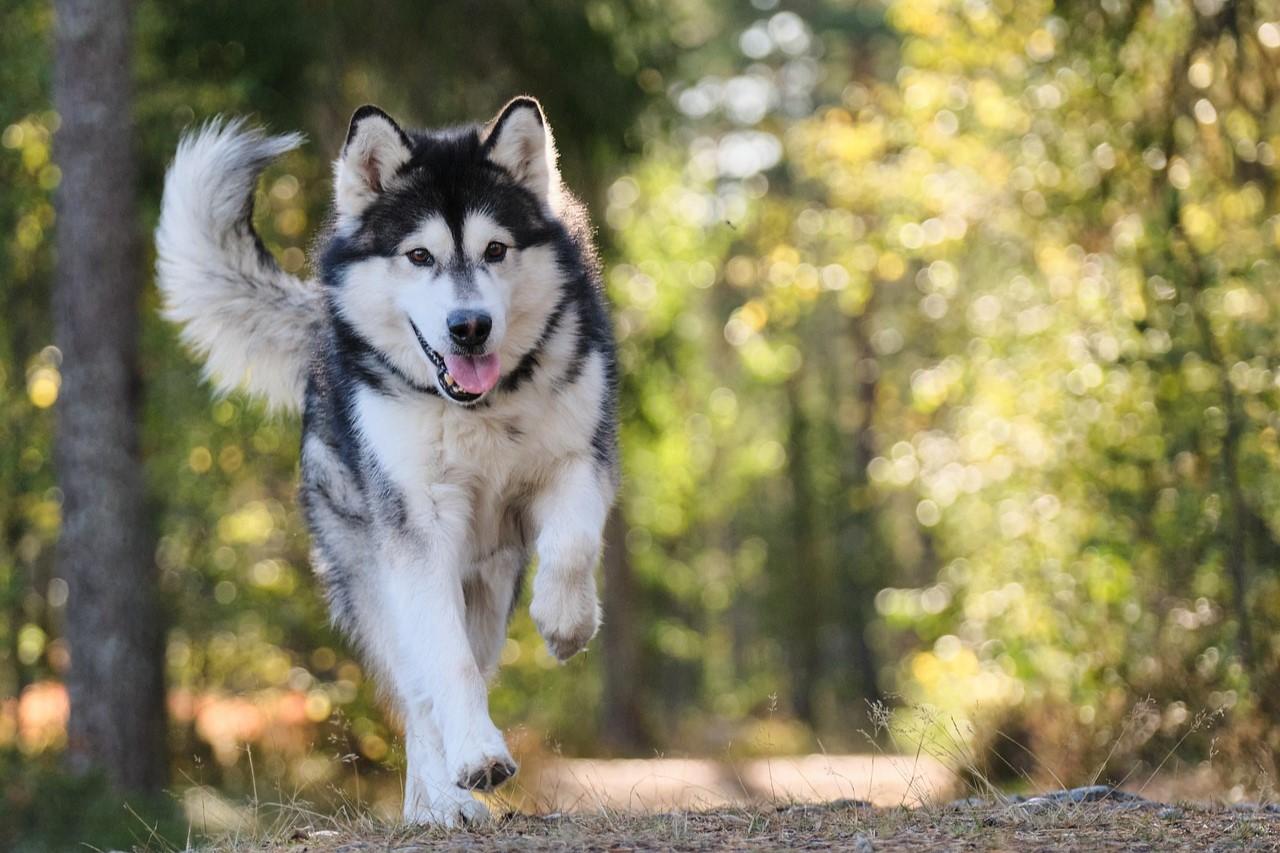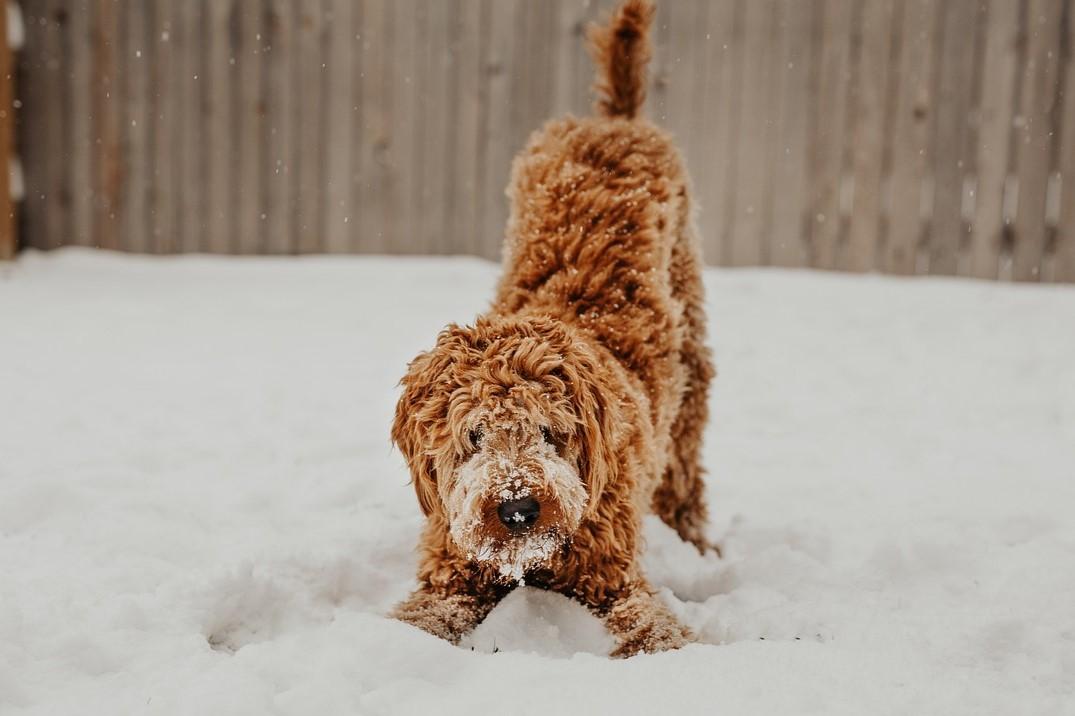No Products in the Cart
Written by Crystal Moore | Last updated 22/08/24

There are a variety of reasons why dogs wag their tails. However, as surprising as it may be, a large chunk of dog owners believe that all wagging tails are a sign that the dog is happy. So, how true is this belief shared amongst many dog owners?
Read on to discover all the signs why dogs wag their tails and understand the meaning behind each wag of your dog's tail.
One way for your dog to communicate is by wagging their tail, and although at first glance it may seem like they're happy, the position, speed and direction that your dog's tail is wagging can tell you a lot.
You may have already noticed your dog's tail in different positions ranging from high, low and horizontal. Some dogs have short or no tails, so always look at the base of your dog's tail to determine the position.
High tail position: When your dog's tail is in a high position, this can show that they are feeling confident and even dominant, almost as if they're saying, "I'm in charge here". If the high tail position is accompanied by rapid wagging, this most likely conveys that they are excited.
Low tail position: If your dog's tail is low, it can indicate that they are being submissive as they may be fearful, unsure or cautious of the situation. Furthermore, if the tail is in a naturally low position, it may also suggest that your dog is relaxed; with this, take note of the rest of your dog's body language to decide how they might be feeling.
Horizontal tail position: This can communicate a variety of things. When your dog's tail is horizontal with no movement, this usually implies that your dog is alert and assessing or focusing on something. On the other hand, if there is movement of the tail, this can show that your dog is neutral and observant of their surroundings.
The speed of your dog's tail can be akin to the tone and how loud they're speaking. A slow wag can mean something completely different from a fast wag.
Fast wagging: If your dog is wagging their tail fast, this can show either excitement or agitation. It's important that you look at your dog's posture to get a better idea of what your dog is feeling.
Slow wagging: This type of wagging usually shows that your dog is cautious or that they are evaluating something or someone.
Still tail or minor movements: When a tail is still or has minor movements at the tip of the tail, this generally means the dog is alert, concentrating, or unsure of a situation or person.
The direction in which your dog's tail wags can reveal a lot to you. One study published in 2013 on Current Biology found that dogs were more relaxed and their heart rates lower when they saw a dog's tail wagging to the right. On the other hand, stress and alerting behaviours were noted alongside increased heart rates when they saw a dog's tail wagging to the left.
Right-sided wag: It has been found that dogs tend to wag their tail to the right when they see someone they like. In a 2007 study by A. Quaranta and colleagues, 30 dogs were individually presented with visual stimuli such as their owner, a stranger and more. The study found that when the dog was presented with their owner, they wagged their tail to the right.
Left-sided wag: When a dog wags their tail to the left, it can indicate that the dog is feeling stressed, anxious, etc. The results from the same 2007 study found that when dogs were presented with an unfamiliar dog, there was a "left-sided bias of tail wagging".
Circular wagging: Also referred to as "helicopter wag", usually suggests that your dog is very happy or excited. Owners tend to see this type of wagging behaviour when they greet their dog after some time apart.

When your dog is happy, you'll most likely find their tail in a neutral position or angled slightly upwards or downwards. When they're happy, their tail may wag in wide side-to-side movements, or the wagging may be right-sided.
The more happy or excited they get, the faster the tail-wagging can become (this is when you might see the helicopter wag!). In some instances, the energy of the excitement can involve the whole body (full-body wag)!
To fully determine if this is a happy tail-wagging session, you should expect your dog to have relaxed ears, soft eyes and relaxed/loose body posture.
Depending on the breed, the tail can be low or mid-level. When your dog is relaxing, their tail may not move at all unless something or someone in the surrounding has sparked an emotion in them. In this instance, they may start to gently and slowly wag their tail. With this, their body will be loose, relaxed, and their ears in a natural position when your dog is relaxed.
You will be able to tell if a dog is being aggressive as their tail is often high and stiff. If there is movement in the tail, it will be stiff and possibly rapid and tense. Your dog may show this if they feel threatened or assertive and it's essential that you look out for a stiff body posture with ears forward or flat against their head. In addition, they may have a direct stare and be showing teeth.
If you find your dog's tail low or tucked between their legs, they are most likely showing submission. Their tail might wag slowly and tentatively or, the wags may be rapid at the tip of the tail. Dogs show submission out of fear or respect and they'll do this to show that they are not a threat and are yielding. Submissive tail wags are generally seen alongside crouched posture, avoiding eye contact or rolling onto their back so that you can see their belly.
A tail may be mid-level or slightly raised when a dog is curious about something. The wagging of their tail will be slow and deliberate and your dog may pause as they assess what they're curious about. When a dog is curious, they tend to have a forward-leaning posture with perked-up ears and a focused gaze.
When your dog becomes highly focused and assesses something or someone, their tail will most likely be stiff and horizontal or slightly raised. When dogs show that they are alert, they indicate that they are ready to react. You'll also find that their posture is tense, and their ears are perked forward or rotating to the sounds.
Dogs wag their tails to communicate a range of emotions, including happiness, to both other dogs and humans. Interestingly, a study published in January on Biology Letters by Silvia Leonetti and colleagues theorised that the tail-wagging trait may have been bred into dogs ever since they were domesticated. Whether that was intentional or unintentional selected is unknown.
Dogs without a tail (whether that is due to the breed or because their tail has been docked) and short tails can still express their emotions and communicate in other ways. The dog's tail is only one part of the puzzle, so you need to understand how your dog may be feeling. Dogs can communicate through:
Body language: Dogs can use their entire body to express certain emotions and intentions. For example if they're happy, they may wiggle the rear end.
Posture: A dog's confidence can show when they stand strong and tall, while on the contrary, a submissive dog may lower their head and rear end to show they're not a threat.
Ears: Take note of the position and movement of your dog's ears as these can give you an idea of their emotional state. For example, when dogs are alert, their ears might perk forward.
Eyes: You can tell when your dog is happy or comfortable when their eyes are soft and relaxed. If you've seen an angry dog, you may have noticed their eyes are intense in a glare.
Vocalisations: Dogs can vocalise emotions in different ways, whether that is through barking, growling or whining. Vocalisations are a crucial communication tool for dogs.
Facial expressions: Your dog's facial expression can help decipher their feelings. Happy dog's mouths are relaxed and can be slightly open, whereas stressed, fearful or angry dogs may have their mouth tightly closed.
When dogs wag their tails whilst lying down, it can signal that your dog is relaxed, happy and comfortable. They may also wag their tail in anticipation for something such as, you giving them attention or a dog treat.
Contrary to what a lot of dog owners believe, not all wagging tails equal happy dog. Taking note of the position, speed and direction of the tail is one piece that can help you decipher how your dog is feeling. Your dog's entire body language can give you a good idea of what they're trying to communicate.
Your dog will most likely wag their tail when they see you as a way of greeting and because they're most likely anticipating something positive, like attention. If you've not seen your dog for a few hours or have gotten back to work, you might even be greeted with a helicopter wag or full body wag!
Many dog owners may wonder, why does my dog lick me? There are many...
by Crystal Moore on June 18, 2024
Dogs play fighting is a natural behaviour that they learn from a...
by Crystal Moore on June 14, 2023
Learn the normal reasons behind your dog's panting and when it...
by Crystal Moore on June 28, 2024
Discover why dogs hide treats and learn effective ways to stop this behaviour...
by Crystal Moore on May 29, 2024

